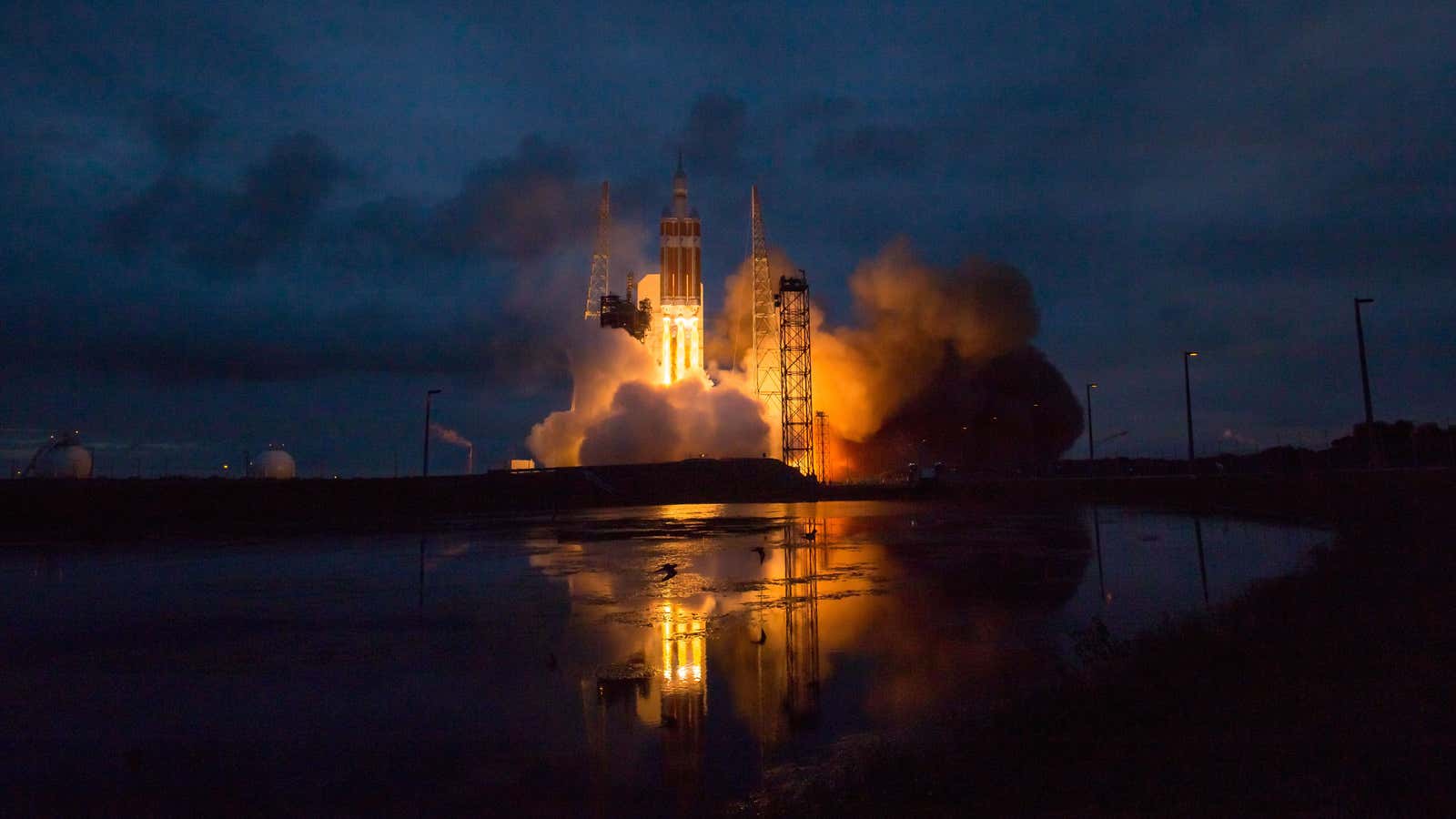The Orion, which took its first unmanned test flight Dec. 5, launching from Cape Canaveral, Florida and orbiting for four and a half hours before splashing into the Pacific Ocean, is NASA’s latest human-rated spacecraft project, and probably the most ambitious ever. Its ultimate goal, like the Apollo program 45 years ago, is to take humans to places they’ve never gone before. In 1969, that meant the Moon. This time, the destination is Mars, and the Orion might take a crew there by 2021.
Given the grand scope of this project, one might think that the NASA engineers building the shuttle would pull out every technological stop, drawing in the newest super-fast computing power. Right?
Not quite, Orion project manager Matt Lemke told The Space Review in a recent interview. In fact, the computer hardware onboard the Orion eschews the cutting-edge, favoring gear that has been tried and tested for years. The three onboard Honeywell-built flight computers each run on two IBM PowerPC 750X single-core processors—dinosaur chips that have been around since 2002, and were used in Apple computers until the company switched to Intel chips in 2006. The computers are “not any faster than your smartphone,” Lemke said.
This isn’t due to budget constraints; the December flight cost $375 million, and the Orion program will receive $1.2 billion funding in fiscal 2015. Rather, it’s because these old-codger computers are actually the best for the job. That’s because while speed might be prioritized in the consumer sector—where customers can or must buy a replacement if something goes wrong—reliability takes precedence when it comes to computing in space.
And the Honeywell computers are nothing if not solid. They are adapted from the onboard computers used by Boeing 747 aircraft and outfitted to resist the intense vibrations and radiation of a long space flight.
The radiation shielding is perhaps the most important. High-energy rays in space can alter a computer’s memory, causing glitches that could be catastrophic. That’s the main reason to have three onboard computers—if one or even two crash, the system can still correct itself.
And of course, hardware from 2002 still makes the equipment the Apollo mission had at hand in 1969 seem prehistoric. Back then, the onboard computer clocked in at one megahertz and had about 36 kilobytes of memory. An iPhone 6 is a thousand times faster, with 30,000 times the memory.
Still, Apollo made it to the Moon. When it comes to space travel, sometimes old and steady beats fast and sexy.
